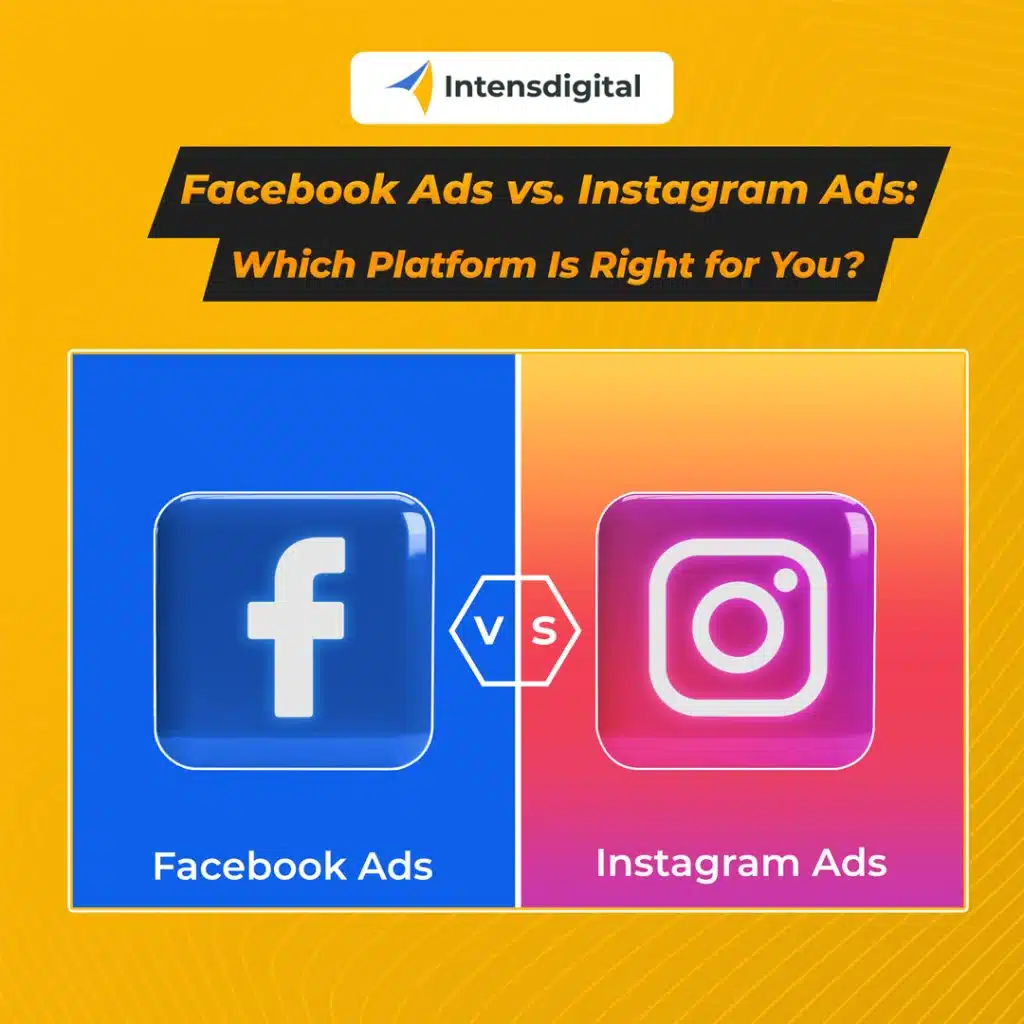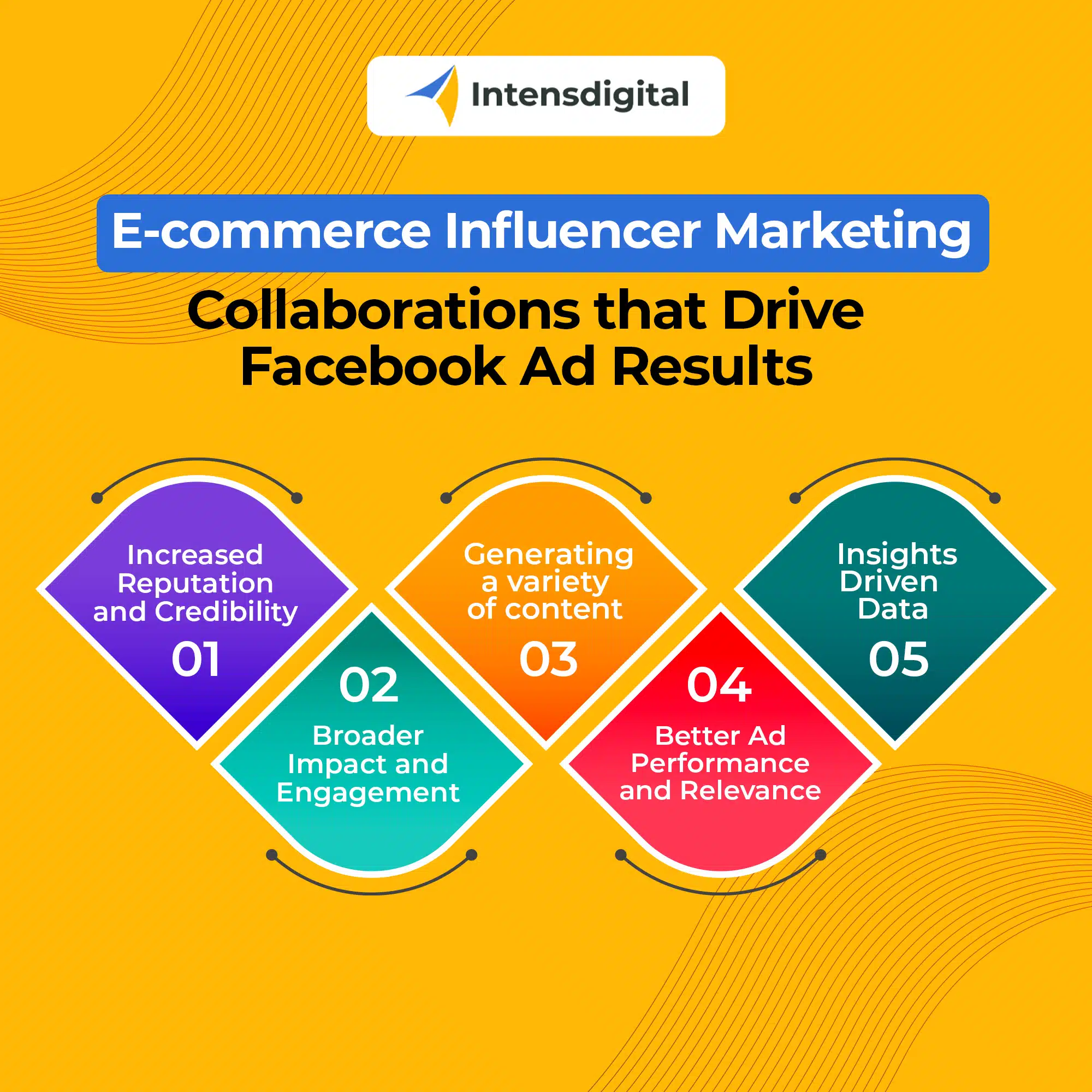Advertising has developed tremendously in the digital age, and social media platforms have become vital tools for firms to reach their target customers. Facebook ads and Instagram ads stand out as two of the most potent advertising channels among the countless social media platforms accessible. Both are owned by Meta Platforms, Inc. (previously Facebook, Inc.) and have a large user base as well as a variety of ad types. However, understanding the distinctions between Facebook and Instagram advertisements is critical when determining which network is best for your advertising strategy. In this post, we’ll look at the advantages and disadvantages of each platform to help you make an informed decision.
Facebook Ads: The Social Advertising Powerhouse
1. Diverse Audience:
Facebook has a massive user base. Because of their massive reach, Facebook advertising are perfect for organizations looking to reach a large and diversified audience. Whether you’re looking for teens, young adults, or elders, Facebook is a good place to start.
2. Extra Targeting Options:
One of Facebook’s most notable features is its extensive ad targeting options. Advertisers may target certain demographics, interests, activities, and even relationships. This detailed targeting guarantees that your advertising is exposed to the most relevant people, enhancing conversion rates.
3. Different Ad Formats:
Facebook has a variety of ad styles available, including image advertisements, video ads, carousel ads, and more. This adaptability enables advertisers to create interesting and innovative material that is suited to their individual campaign goals.
4. Ad Positioning Flexibility:
Ads on Facebook can be displayed in a variety of places across the site, including users’ News Feeds, Stories, the right-hand column, and even the Audience Network. This adaptability allows you to select the placements that best suit your campaign’s objectives and budget.
5. Extensive Analytics:
To analyze the success of your advertisements, Facebook provides sophisticated analytics and reporting capabilities. You may track critical indicators like as click-through rates, conversion rates, and return on ad spend (ROAS) to better optimize your ads.
Instagram Ads: The Ultimate in Visual Storytelling
1. Visual-Centric Platform:
Instagram is well-known for its visual content, having over 1 billion monthly active users. Instagram ads are the ideal medium to exhibit your products or services if your business depends significantly on amazing images and aesthetics. It works especially well for firms in the fashion, tourism, culinary, and other aesthetically appealing industries.
2. Participation and Brand Awareness:
Instagram has a far greater interaction rate than Facebook, making it a fantastic alternative for increasing brand exposure and cultivating a strong community of followers. Instagram users are more inclined to like, comment, and share material, which might help your company get seen.
3. Telling a Story Through Stories:
Instagram Stories is a novel advertising strategy that allows businesses to produce ephemeral content that disappears after 24 hours. This format is ideal for conducting time-sensitive promos, sneak peeks, and behind-the-scenes looks at your company.
4. Collaboration with Influencers:
Instagram is a haven for influencers and micro-influencers with large followings. Collaboration with influencers may be a powerful method for reaching a certain niche audience and utilizing their credibility to promote your products or services.
5. Effective Shopping Experience:
The purchasing tools on Instagram allow users to make purchases straight from the site. Instagram may create a flawless purchasing experience for your customers if your objective is to generate sales.
Comparison between Facebook and Instagram Ads
Now that we’ve discussed the distinct advantages of Facebook and Instagram advertisements, let’s look at a side-by-side comparison to see which platform best fits your advertising objectives.
1. Audience Segmentation:
Facebook: Provides a wide range of audience targeting choices, making it ideal for businesses with a broad or narrowly focused target audience.
Instagram: While Instagram still provides strong targeting, it may be better suited for marketers trying to interact with a visually oriented, younger audience.
2. Advertisement Formats
Facebook: Offers a variety of ad types to accommodate a variety of marketing objectives.
Instagram: With formats like Stories, it excels in visual storytelling, making it a fantastic alternative for brands that value aesthetics.
3. Involvement and Brand Development
Facebook Page: Suitable for increasing brand exposure and engagement, especially for firms seeking to target a broad age range.
Instagram: It thrives on cultivating a highly engaged community and is great for visually-driven companies seeking to establish a strong visual identity.
4. Sales and E-commerce
Facebook Page: It provides a variety of ad styles and positions for e-commerce campaigns, making it adaptable for increasing sales.
Instagram: It provides a unified purchasing experience and is especially beneficial for fashion, beauty, and lifestyle businesses.
5. Marketing Through Influencers:
While influencers can still be effective on Facebook, because to its visual design and influencer-friendly features, Instagram remains the go-to medium for influencer partnerships.
6. Budget and Return on Investment
Facebook: Provides a wide range of budgeting choices as well as sophisticated analytics tools for campaign optimization.
Instagram: Due of its aesthetic appeal and engagement rates, Instagram can deliver a greater ROI in some circumstances.
Select Which Platform Is the Best Fit for You?
The decision between Facebook and Instagram advertisements is influenced by your unique company objectives and target demographic. Consider the following scenarios:
1. Facebook Ads If:
You have a diverse target audience that spans numerous demographics.
Your campaign is based on precise audience targeting.
You need a variety of ad styles and locations.
Your objective should be to strike a balance between brand recognition, engagement, and sales.
2. Select Instagram Ads If
You work in a visually appealing industry like fashion, tourism, or cuisine.
Creating brand recognition and a strong visual identity is a top concern.
You want to take advantage of influencer marketing.
Your major goal is to engage a younger, visually oriented-audience.
3. Join Both If:
Your target audience is diverse in age, and you want to reach as many people as possible.
You have the money to conduct concurrent campaigns on both platforms
Your company may profit from the distinct characteristics of each platform in various elements of your marketing plan.
Facebook and Instagram advertisements, provide significant benefits in the realm of digital advertising, catering to diverse company demands and target demographics. The decision between the two is ultimately determined by your campaign’s unique objectives, budget, and the type of your products or services. Whether you choose Facebook for its enormous reach and smart targeting or Instagram for its visual storytelling and engagement skills, both platforms provide tremendous tools to help your business flourish in the ever-changing field of social media advertising.




